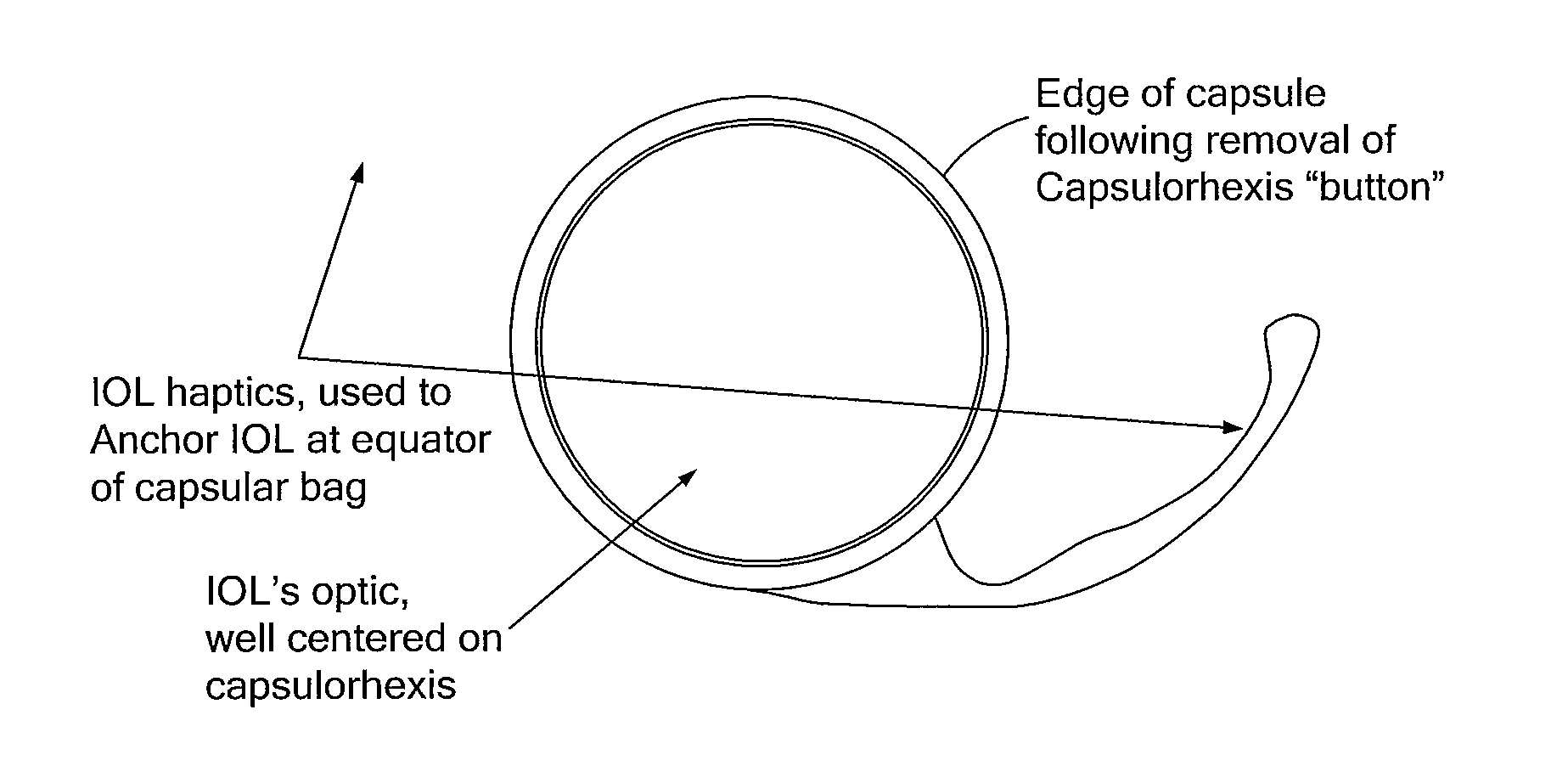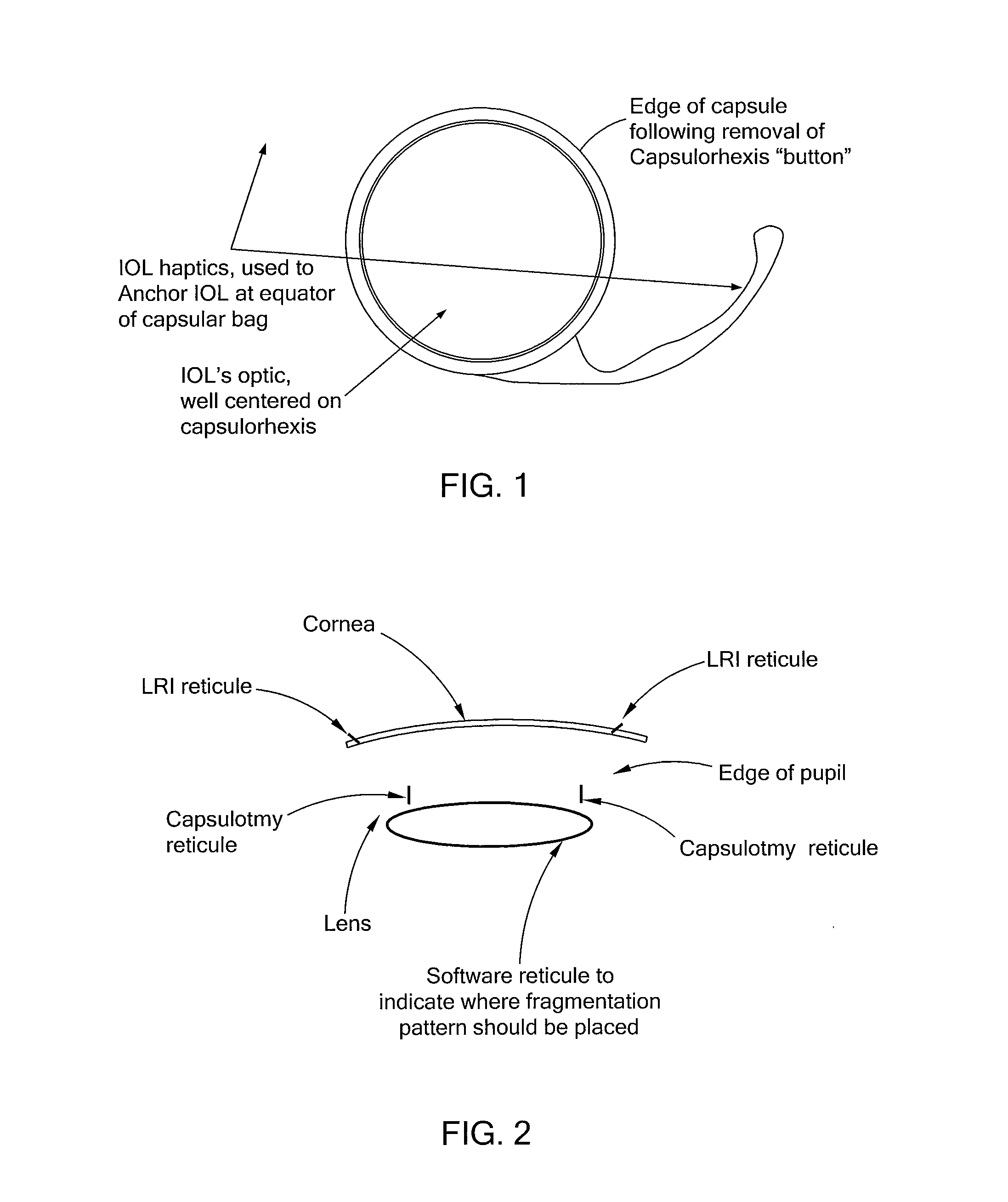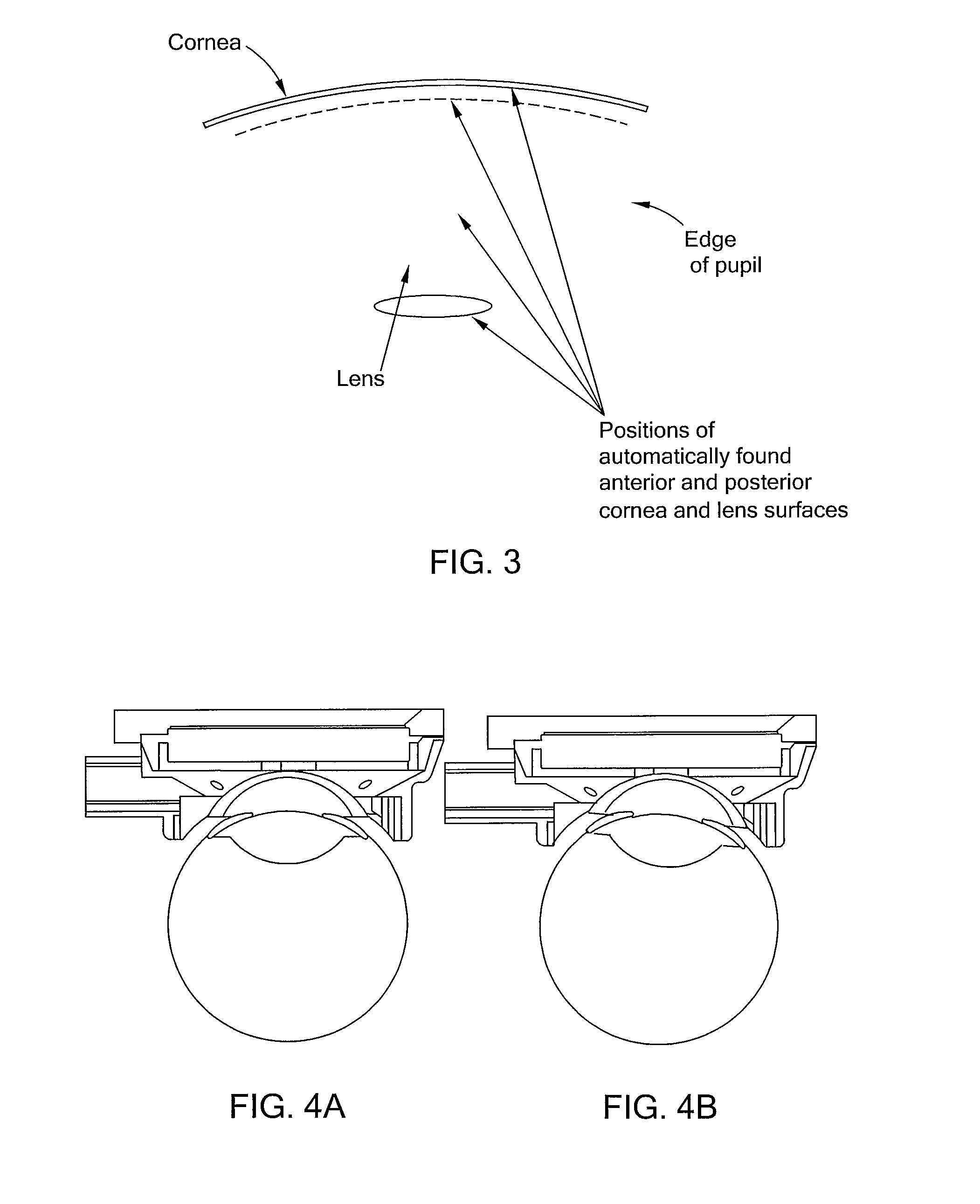System and method for measuring tilt in the crystalline lens for laser phaco fragmentation
a technology of crystalline lens and laser phaco fragmentation, which is applied in the field of three-dimensional images of cornea and eye lens, can solve the problems of all incisions missing the lens capsule and cutting instead, increasing the risk of anterior capsule tear, and obstructing or interfering with the laser
- Summary
- Abstract
- Description
- Claims
- Application Information
AI Technical Summary
Benefits of technology
Problems solved by technology
Method used
Image
Examples
Embodiment Construction
[0031]In accordance with the present invention, when two or more longitudinal sectional images of the eye are obtained, the positions of an optical surface (anterior or posterior cornea or lens surface), as characterized mathematically for each longitudinal sectional image, can be used to generate a three dimensional model of the surface, by curve fitting the edge points found from each image to the mathematical representation of a sphere, using a least squares algorithm. The process is repeated to obtain the mathematical representations of each of the anterior or posterior cornea or lens surfaces in terms of a best-fit sphere or other appropriate mathematical representation of the surfaces, such as modeling the surfaces in a Zernike polynomial expansion.
[0032]A particular process 200 for reconstructing a three dimensional model of the cornea and crystalline lens within a coordinate system defined by the camera and laser is shown in FIGS. 6 and 7. In the case of FIG. 6, only a singl...
PUM
 Login to View More
Login to View More Abstract
Description
Claims
Application Information
 Login to View More
Login to View More - R&D
- Intellectual Property
- Life Sciences
- Materials
- Tech Scout
- Unparalleled Data Quality
- Higher Quality Content
- 60% Fewer Hallucinations
Browse by: Latest US Patents, China's latest patents, Technical Efficacy Thesaurus, Application Domain, Technology Topic, Popular Technical Reports.
© 2025 PatSnap. All rights reserved.Legal|Privacy policy|Modern Slavery Act Transparency Statement|Sitemap|About US| Contact US: help@patsnap.com



